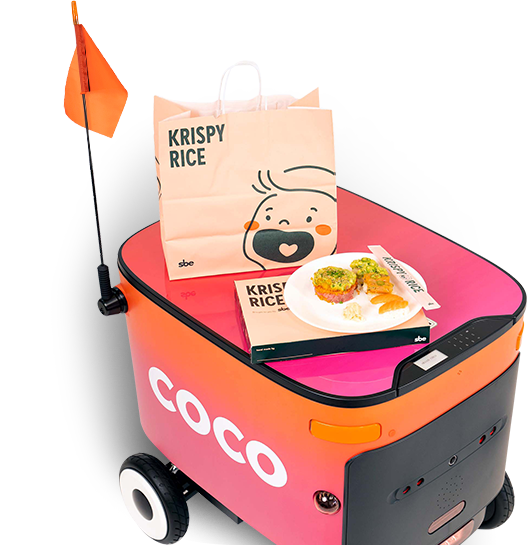Robotics is a multidisciplinary field that involves designing, constructing, and programming robots to perform complex tasks automatically, integrating mechanical engineering, computer science, and electrical engineering.
How do we do it?
Robotics is a field of technology that deals with the design, construction, operation, and application of robots - programmable platforms capable of carrying out a complex series of actions automatically. This domain involves mechanical engineering, but also incorporates computer science and electrical engineering for the programming, control, and automation aspects.
Developing robotic systems is a multidisciplinary task that involves understanding the problem at hand and designing a mechanical solution that can solve it. This is followed by selecting and implementing the appropriate sensors and actuators to allow the robot to interact with its environment. The robot is then programmed to carry out its tasks, often involving a combination of high-level decision making and low-level direct control of the hardware. We often use simulation tools before deploying to the physical robot. Testing and validation of the robot's performance is crucial, with iterative improvements made based on these tests. Finally, the development includes the integration of the robotic system into the broader operational context, including human-machine interfaces.
From the business point of view, the most prominent benefit of multiplatform software is the ability to reuse the codebase again and again. That means no more hiring new developers to create code for various operating systems but using a single codebase for multiple platforms repeatedly.
While creating a crossed-platform software, we operate in the SaaS (Software as a Service) model. This model relies on cloud services, ensuring your organization cuts the costs of purchasing bulk licenses. SaaS uses external provider hosts applications and makes them available over the Internet.
Developing robotic systems is a multidisciplinary task that involves understanding the problem at hand and designing a mechanical solution that can solve it. This is followed by selecting and implementing the appropriate sensors and actuators to allow the robot to interact with its environment. The robot is then programmed to carry out its tasks, often involving a combination of high-level decision making and low-level direct control of the hardware. We often use simulation tools before deploying to the physical robot. Testing and validation of the robot's performance is crucial, with iterative improvements made based on these tests. Finally, the development includes the integration of the robotic system into the broader operational context, including human-machine interfaces.
From the business point of view, the most prominent benefit of multiplatform software is the ability to reuse the codebase again and again. That means no more hiring new developers to create code for various operating systems but using a single codebase for multiple platforms repeatedly.
While creating a crossed-platform software, we operate in the SaaS (Software as a Service) model. This model relies on cloud services, ensuring your organization cuts the costs of purchasing bulk licenses. SaaS uses external provider hosts applications and makes them available over the Internet.
Process
01
Requirement Analysis: Understand the needs of the client. Identify the tasks the robot should be able to perform, the environment it will operate in, and the level of autonomy required.
02
Design and Prototyping: Design the physical structure of the robot and build a prototype. This involves selecting the appropriate mechanical elements, such as motors, gears, and materials that suit the robot's tasks and environment.
03
Sensor and Actuator Selection: Choose the appropriate sensors (e.g., cameras, Lidar, touch sensors) and actuators (e.g., motors, servos) that will allow the robot to interact with its environment and perform its tasks.
04
Programming and Control: Develop the software that controls the robot's actions. This includes low-level direct control of the hardware, as well as high-level decision-making algorithms. Often, AI and machine learning techniques are used to allow the robot to adapt to new situations.
05
Simulation and Testing: Use simulation tools to test the robot's performance before deploying the software to the physical robot. After initial simulations, carry out extensive real-world testing to validate and refine the robot's performance.
06
Integration: Integrate the robotic system into the client's operational context. This could include developing human-machine interfaces, integrating with other software systems, or setting up communications networks for remote control or teleoperation.
07
Maintenance and Monitoring: Continually monitor the robot's performance and carry out regular maintenance to ensure the robot remains operational. This could include mechanical maintenance, software updates, and replacing worn-out components.
08
Feedback and Iteration: Gather feedback from the client and end-users. Use this feedback to make iterative improvements to the robot, enhancing its capabilities, reliability, and user-friendliness.
Case study

Coco
Coco is a leading robotic delivery service that deploys remotely piloted sidewalk vehicles to make last-mile deliveries more affordable, reliable, and sustainable.
With xBerry’s support and collaboration, Coco has achieved significant improvements in the reliability and performance of their onboard software stack.

Maddie Robot
Maddie is a conceptual robot designed to perform mosaic household tasks – from bringing water from the fridge to vacuuming and arranging a phone call.
Using several advanced techniques, from complex image and data processing to expansion algorithms, we built an innovative prototype that allowed us to move into the future of fully functional household robots.
Related post
